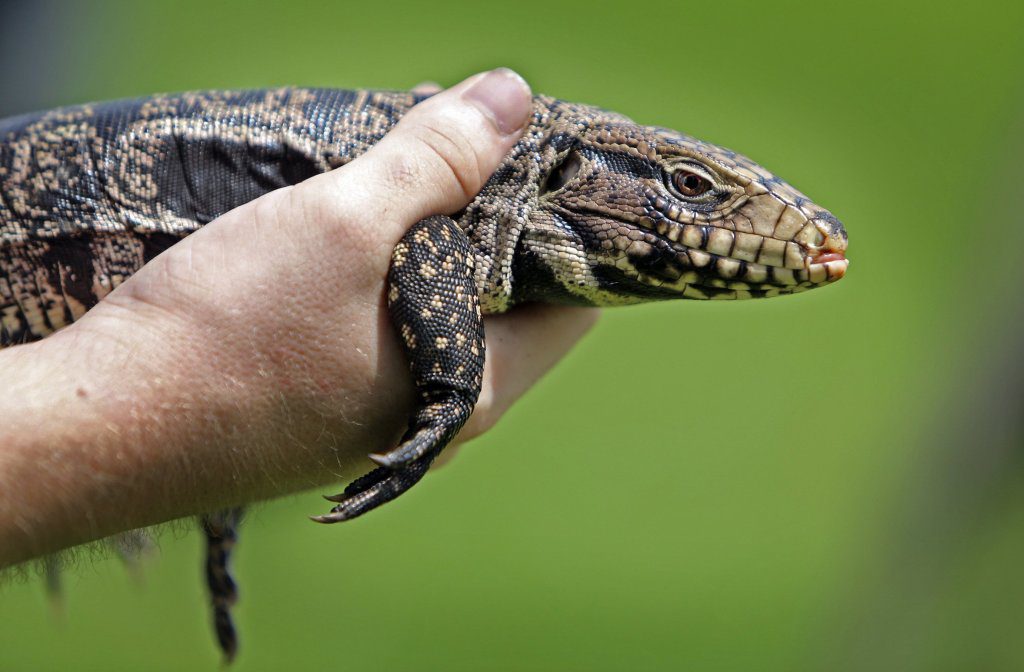Lizards can be fascinating creatures to observe in the wild. Their quick movements and ability to camouflage themselves makes spotting them a fun challenge. Sometimes you may want to catch a lizard for a closer look before releasing it back into the wild. Catching lizards takes patience and care, but can be done safely if you follow some simple steps.
Locating Lizards
The first step to catching a lizard is finding one. Lizards like warm, sunny spots where they can thermoregulate their body temperature. Good places to look include:
- Rocks, logs, or patches of dirt where lizards may be sunbathing. Inspect carefully as lizards are masters of camouflage.
- Areas with brush, tall grass, or leaf litter where lizards may hide. Carefully part vegetation to reveal hiding spots.
- Garden walls, fences, and areas around man-made structures which retain heat and offer hiding spots.
The best times to search are early morning when lizards emerge to bask or late afternoon when they are active again. Actively looking under debris increases your chances of spotting a lizard.
Approaching Lizards
Once you spot a lizard, the next step is approaching it quietly and carefully. Sudden movements will startle a lizard and cause it to flee. Here are some tips for sneaking up on a lizard:
- Move slowly and take quiet steps. Avoid casting a shadow over the lizard if possible.
- Stay low to the ground and move from multiple angles so as not to appear as a looming threat.
- Be patient and stop frequently. Allow the lizard to grow accustomed to your presence.
- Have a catching container ready so you can make your attempt quickly.
Get as close as you can while disturbing the lizard as little as possible. You want to get within catching range rapidly so the lizard doesn’t have time to run off.
Catching the Lizard

When you are within a couple feet of the lizard, you can attempt to catch it. Here are two effective techniques:
- Hand Catch – With your hands close together, swiftly clasp a cupped hand over the lizard before it can react. Do not squeeze or grab too tightly. Use this method for larger, slower lizards.
- Container Trap – Place a container like a deep plastic cup on its side gently over the lizard. Slide a piece of cardboard under the container, trapping the lizard inside. Tilt upright and put a lid on top. This works well for smaller, faster lizards.
In both cases, move rapidly but smoothly to secure the lizard without injuring it. Expect the lizard to try to flee – anticipate its movements and block escape routes. With practice, your success rate will improve.
Keeping the Lizard Temporarily
Once caught, you need a way to keep the lizard safely for a short period of time for observation. Here are some guidelines:
- Use a secure, ventilated container – plastic or glass terrariums and sturdy net cages work well. Avoid unnecessary handling.
- Include substrate and hiding spots to reduce stress – paper towels, leaves, bark, rocks. Spray container with water.
- Keep the container out of direct sun to prevent overheating. Aim for similar temperature to capture location.
- Only keep for a minimal time – no more than 12-24 hours. Lizards require specific care for long-term captivity.
- Release the lizard back into its native habitat when done. Never translocate lizards to new areas.
Proper temporary containment ensures the safety of both the lizard and yourself. Never keep native lizards permanently or try to make them pets. Appreciate them in nature.
Conclusion
Catching lizards can be an enjoyable educational experience if done properly. Search likely habitats carefully. Approach using stealthy movements. Capture lizards gently but swiftly. House briefly in secure, naturalistic enclosures. Then return them back to the wild unharmed. With care and respect for the animal, observing a lizard up close can give you a new appreciation for these fascinating reptiles.
Read more topic about:
FAQ About How to Catch a Lizard
What are the best methods to catch a lizard safely?
Using gentle methods like slow hand movements or soft tools is safest. Avoid sudden movements that can stress or harm the lizard. Patience is key; allow the lizard to feel comfortable and approach you.
Can I use my hands to catch a lizard?
Yes, but ensure clean, dry hands. Move slowly and smoothly. Start by gently cupping the lizard, avoiding sudden grabs. Use both hands to prevent escapes. Wash your hands after handling lizards to avoid transmitting bacteria.
Are there specific tools or equipment for catching lizards?
Tools like gentle nets, tongs, or critter catchers can be helpful. These allow you to catch lizards without direct contact, reducing stress for both you and the lizard.
How do I approach a lizard without scaring it away?
Move slowly and avoid sudden movements, as these can startle lizards. Maintain a low profile and approach from the side to appear less threatening. Avoid direct eye contact and sudden noise.
What are some effective baiting techniques for lizards?
Use live insects that the lizard typically consumes. Place them where you can observe the lizard. Wait patiently for the lizard to approach the bait, then move slowly to catch it.
Are there certain times of day that are better for lizard catching?
Early morning or late afternoon is often better, as lizards are more active during these times. Warmth encourages activity, making it easier to spot and catch them.
How can I create a suitable holding container for a caught lizard?
Use a well-ventilated container with secure lid perforations for air. Line it with a soft material to prevent injuries. Ensure the container is appropriately sized and escape-proof.
What precautions should I take while handling a caught lizard?
Handle gently and minimally. Avoid squeezing, as lizards can drop tails or become stressed. Wash your hands before and after handling to prevent contamination.
How do I release a captured lizard without harming it?
Choose a suitable release site with the appropriate habitat and resources. Open the container slowly, allowing the lizard to exit at its own pace. Avoid sudden movements that might startle the lizard.
Are there laws or regulations related to catching lizards?
Yes, in some areas, certain lizard species are protected, and capturing them may be illegal without permits. Check local wildlife regulations before attempting to catch lizards.



